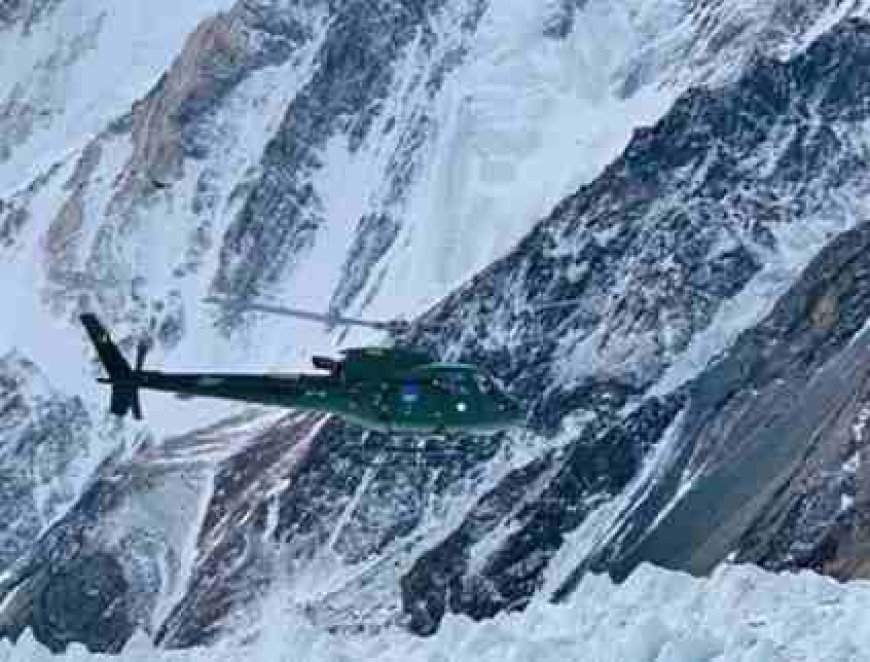Pakistani Army Saves Tourists Stuck in Deosai
Over 200 tourists were trapped in the remote Deosai Plains in Gilgit-Baltistan after monsoon-triggered flash floods and landslides blocked access roads near the Chilas region. The Pakistan Army launched a large-scale rescue operation, deploying helicopters and ground teams to airlift stranded groups—many of them women and children—to safety.

Over 200 tourists were trapped in the remote Deosai Plains in Gilgit-Baltistan after monsoon-triggered flash floods and landslides blocked access roads near the Chilas region. The Pakistan Army launched a large-scale rescue operation, deploying helicopters and ground teams to airlift stranded groups—many of them women and children—to safety. While at least three tourists died, ongoing efforts continue to locate missing people amid heavy machinery recovery operations and narrowing weather windows.
-
Stranded tourists: Over 200 people stuck in Deosai after landslides and floods blocked roads
-
Fatalities and missing: At least 3 tourists confirmed dead; 15 reported missing
-
Army aerial rescue: Military helicopters airlift women, children, and injured from flood-hit zones
-
Ground operations: Heavy machinery and local volunteers help clear debris and search blocked routes
-
Location: Near Chilas district, Gilgit-Baltistan, along Babusar Road and Deosai access routes
-
Weather alert: NDMA and PMD warned travelers earlier against visiting northern areas due to flash flood risk
-
Climate context: Above-normal rains since late June caused at least 225 deaths and over 500 injuries nationwide
On July 21, 2025, intense monsoon rains triggered a cloudburst and landslides near the Deosai Plains, severing the Chilas–Skardu route and trapping over 200 tourists in one of Pakistan’s most beautiful but high-risk terrains. Vehicles—including tourists’ buses and cars—were buried under rubble. The region, at over 4,100 m elevation, is difficult to access during normal conditions, especially in adverse weather.
-
Pakistan Army helicopters swiftly airlifted stranded tourists—emphasis on rescuing women, children, and injured individuals first.
-
Ground forces, including Gilgit-Baltistan Scouts, joined in foot search missions. Heavy machinery cleared landslides to facilitate rescue efforts.
-
The Deputy Commissioner of Diamer, local administration, and volunteer groups offered shelter and logistical support.
-
Local hosts in Chilas and nearby villages provided food, shelter, and medical support.
-
Area hotels and guesthouses stayed open despite risk, assisting tourists stuck overnight.
-
Roads blocked, communications down, and constant rain complicated rescue.
-
Search engines worked through the night, navigating shifting debris and high-altitude weather.
-
GB Government spokesperson Faizullah Faraq confirmed the rescue details and casualty count.
-
Pakistan Army’s public relations office stated the mission’s success in evacuating over 200 people safely.
-
Since June 26, Pakistan has received above-normal monsoon rainfall, especially in northern provinces.
-
The NDMA and PMD had issued flood-risk flags for mountainous regions, including Deosai, Babusar Pass, Murree, and Gilgit-Baltistan.
-
Disaster experts compare the pattern to the enormous and deadly 2022 floods that swept through Pakistan, killing 1,700 people and affecting millions.
-
Establish early warning systems: PMD must improve cloudburst and landslide alerts, especially for tourist routes.
-
Enforce seasonal travel bans: Authorities should restrict non-essential access to high-altitude zones during peak monsoon.
-
Tour operator liability: Those arranging journeys must include risk briefings and contingency plans for rapid evacuation.
-
Infrastructure investment: Upgrade communication networks and maintain emergency shelters en route.
-
Community training & drills: Empower local populations to assist effectively in emergencies.
The Pakistan Army’s swift intervention to rescue over 200 tourists from stranded tourists after a brutal monsoon-induced disaster in Deosai illustrates resilience and coordination under pressure. Though casualties are tragic, the scale of the rescue operation—using aerial lifts, heavy machinery, and local support—demonstrates effective crisis response. With more severe weather events forecast through late July, this incident underscores a clear need for systematic travel advisories, prevention protocols, and emergency infrastructure in Pakistan’s high-altitude tourism zones.

 Mohammad Adil
Mohammad Adil